

| Nottinghamshire Ladybirds |
| Ladybirds include some of the most popular and easily recognised beetles. They belong to the order Coleoptera (Beetles) family Coccinellidae and there are 42 species currently resident in the UK. Over recent years we have done a great deal of work on those species we have found in Nottinghamshire, learning about their preferences when chosing an overwintering site and monitoring their numbers for a number of years. | ||
| ...... | ||
| During that time
we have noticed a possible trend in populations, with
peak numbers varying from year to year and generally
reaching a peak every three to four years. This gradual
rise in population levels does not seem to correspond to
all species within the same time frame, as some species
still remain relatively difficult to find each season. For instance, the Pine Ladybird last occurred in large numbers within suitable habitat back in 2006 and has continually remained at low levels since, whilst the 2-spot Ladybird seems to have fared similarly. In Nottinghamshire at least, the commonest of our resident Ladybirds is the 7-spot. It's large size and conspicuous colouration make this the most obvious species recorded in the field. Huge numbers occurred along a small section of Hare Hill Wood at Kersall in 2007, where counts rose from a January maximum of 255 adults, to approximately 1,142 in March. By November, a maximum of just 31 adults were found. |
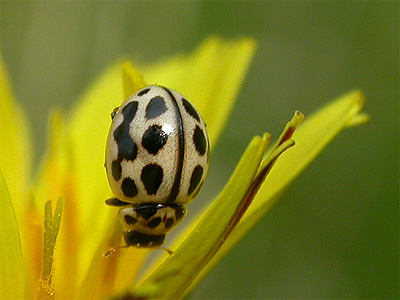 |
|
| ...... | ||
| It took a further three years before numbers reached similar levels to those of 2007 and the latest news is that the heavy snow and ice in December 2010, has had little or no effect on numbers based on counts carried out between February and March 2011. Our thought is that these peak variations are probably more weather related than a lack of food, as Green Shieldbug numbers have fared similarly to those of the 7-spot Ladybird, over the same number of years. | ||
| ...... | ||
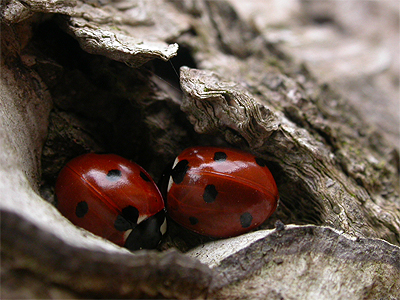 |
Most of our Ladybirds eat
aphids, but some species' have diets of fungi and
vegetation. The bright yellow 22-spot Ladybird is usually
best found feeding on mildew infested leaves of low
growing plants, or on Oak regrowth that is often prone to
mildew. The Harlequin - a threat to UK Ladybirds? Following the addition of the Harlequin Ladybird to the UK list back in 2004, the huge amount of publicity in the media that followed, resulted in almost complete condemnation of this Ladybird. Whilst it has indeed gone on to colonise most of the UK, the expected eradication of some of our native Ladybirds and the many other invertebrates it was claimed likely to cause become extinct has still to materialise in Nottinghamshire. We have heard that adult Harlequins are still killed today by some naturalists and the real danger here is that similarly marked species, could recieve the same treatment by people with far less identification skills. |
|||
| ...... | ||||
| We have also yet to see any direct observations of Harlequin adults or larvae eating the larvae of other species. Although this is likely to happen occasionally in times of severe (unlikely) shortages of Aphids, it is probably no more likely than the larva of another species eating a smaller larva of the same or different species. The only instance we have ever seen of larval cannibalism, actually concerned a 7-spot larva eating a pre-pupating 7-spot larva at Warsop Main Pit Top back in 2006. In our own experience, we have found that when approached, many 7-spot Ladybirds will react more aggressively to an approaching finger than a Harlequin will. | ||||
| ...... |
| Below are photographs of probably all the species found in Nottinghamshire. These are given as an aid to their identification, with links to other pages showing adult variants and the larval and pupal stages of most species. Short notes are included on habitat and over-wintering preferences. |
| ...... |
| Heather
Ladybird Chilocorus bipustulatus (Linnaeus, 1758) |
||
| The example pictured was one of several found on Budby South Forest, Nottinghamshire in April 2006. This small ladybird (about 4mm) is dome-shaped and may be restricted in the county to areas of heathland. Best searched for by sweeping low vegetation, but all our records have come from the trunks of trees in heathland, especially in Spring. We have not recorded this species during the Winter. | ||
| .... | ||
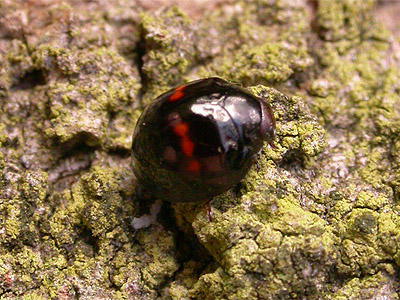 |
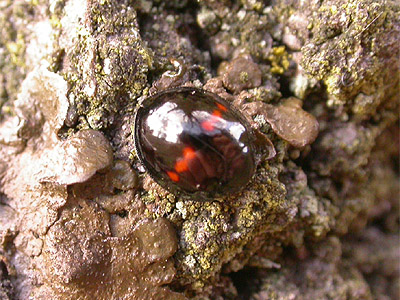 |
|
| 18-spot
Ladybird
Myrrha
octodecimguttata (Linnaeus, 1758) |
||
| Although regarded as a pretty widespread ladybird in Nottinghamshire, this 18-spot Ladybird was an unexpected find at Haywood Oaks on August 15th 2006. The 18-spot Ladybird is a fairly small species and a tree dweller, showing a preference for the tops of Scots Pines. The background colouration is a rich brown (Cream-spot Ladybird is darker and a larger insect) ID can be clinched by the rounded 'M' mark on the Pronotum. We have still only found this Ladybird once since 2006. | ||
| .... | ||
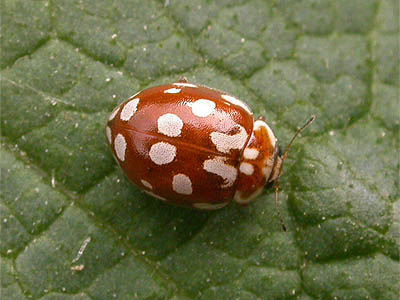 |
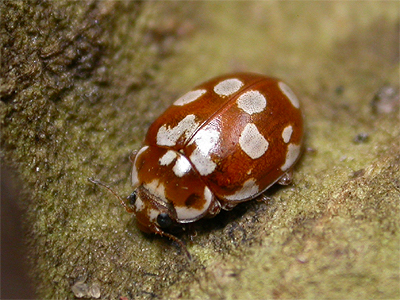 |
|
| 14-spot
Ladybird Propylea
quattuordecimpunctata (Linnaeus, 1758) |
||||
| Show variants | ||||
| A common Ladybird that has it's UK stronghold in the Midlands. It is always recognised by the dark mid-line and square spots. There are usually fourteen distinct spots but these are variable in size and can be joined in some adults. In Nottinghamshire, it is a very common species and an easy find. A Ladybird we have found just once over the Winter, in early 2011 when two adults were located in a rolled leaf of an evergreen Viburnum shrub in an urban garden. | ||||
| .... | ||||
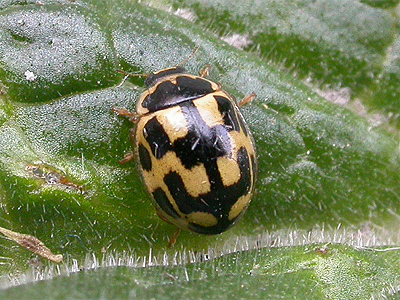 |
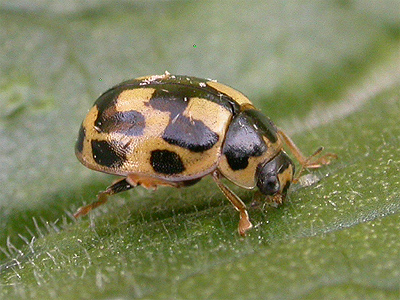 |
|||
| .... | ||||
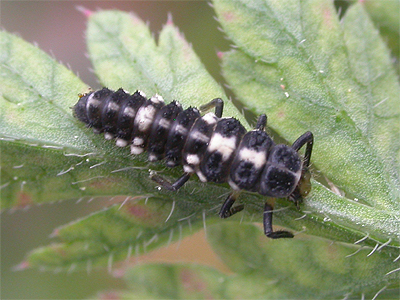 |
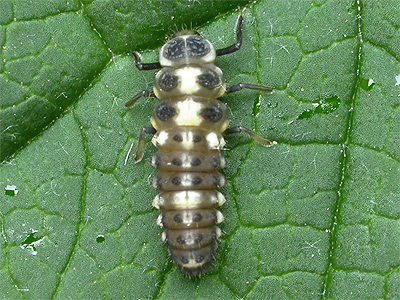 |
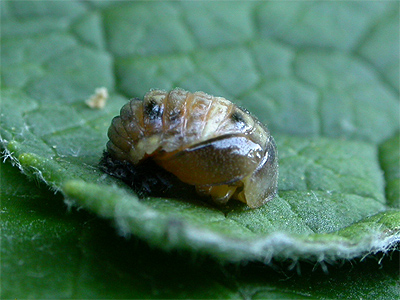 |
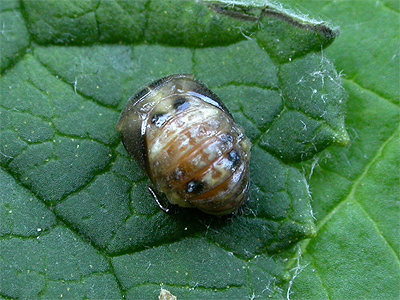 |
|
| Eyed
Ladybird Anatis
ocellata (Linnaeus, 1758) |
||||
| Show variants | ||||
| The Eyed Ladybird is the largest UK species (8mm) and is generally arboreal, especially favouring Scots Pine. The individual pictured is one of few records from the area and was discovered resting on Nettle near Eakring village. No doubt it is frequently overlooked at a number of Nottinghamshire sites, but is quite an easy find around areas within the Sherwood Forest NNR where Pines grow. Both the number and colours of spots are variable. | ||||
| .... | ||||
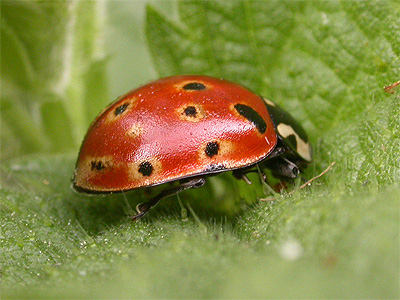 |
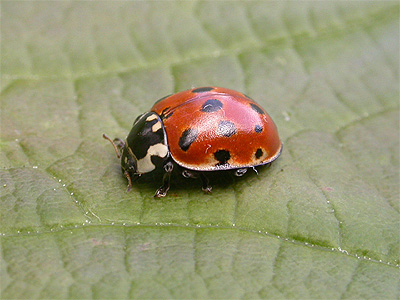 |
|||
| .... | ||||
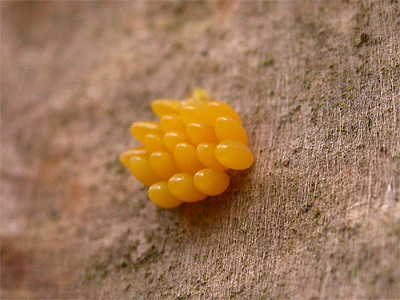 |
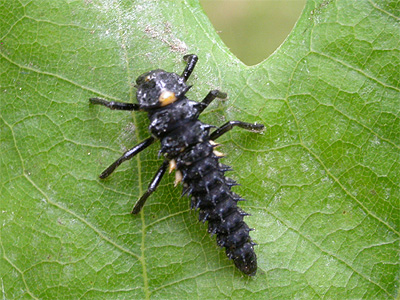 |
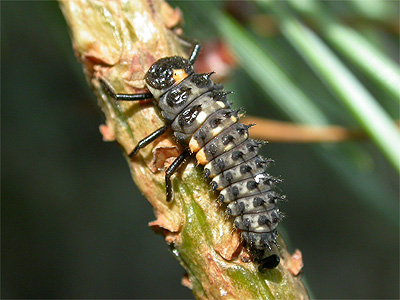 |
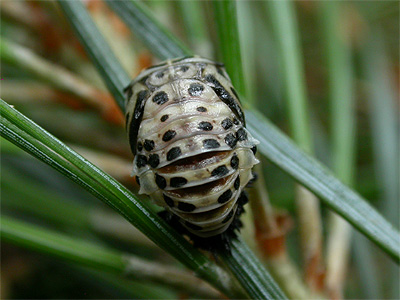 |
|
| Larch
Ladybird Aphidecta
obliterata (Linnaeus, 1758) |
||||
| It took us several years of searching to finally find this small ladybird, but on the day we swept two adults from the lower branches of Larch along the southern side of Budby South Forest, both turned up from sweeping one particular branch. Larch Ladybird may possibly be quite widespread in plantations containing Larch across Nottinghamshire, but it is far from being an easily found species. Length 4mm. | ||||
| .... | ||||
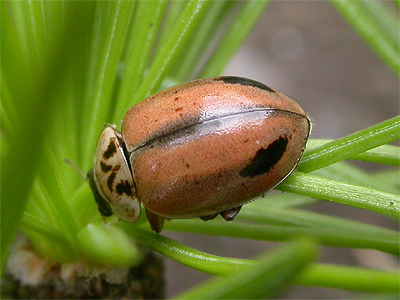 |
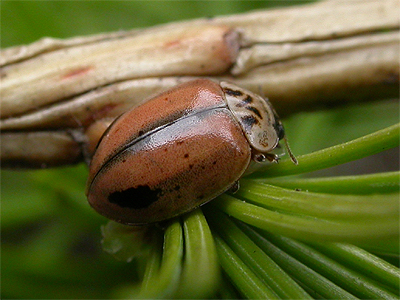 |
|||
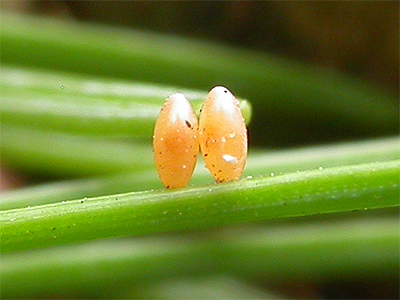 |
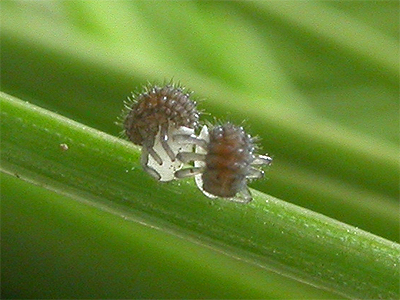 |
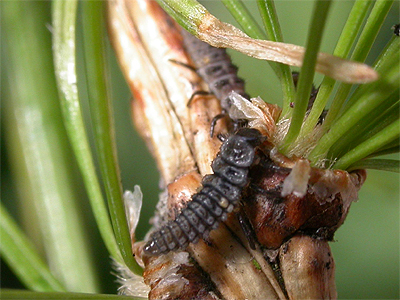 |
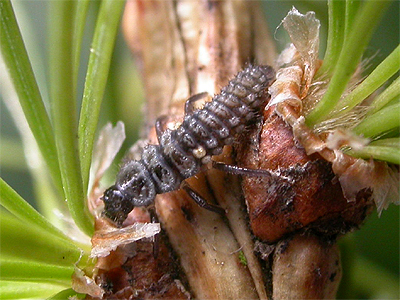 |
|
| 7-spot
Ladybird Coccinella
septempunctata (Linnaeus, 1758) |
||||
| Show variants | ||||
| The most abundant UK species and very common in the Eakring area. It is one of the largest of our native Ladybirds, measuring some 6-8mms long and most often found openly on low-growing plants. Over-wintering sites are usually obvious, adults being found in leaf litter, tucked within crevices on branches and on fences etc, but is easily located on small Pines. | ||||
| .... | ||||
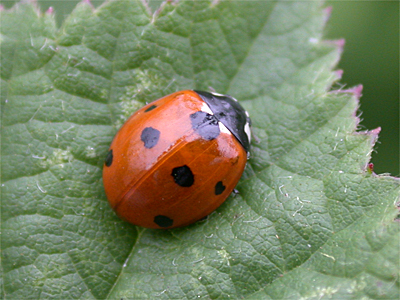 |
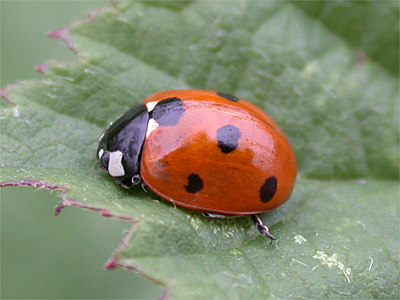 |
|||
| .... | ||||
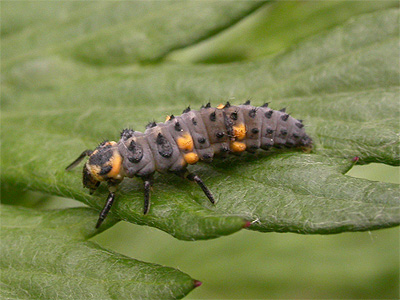 |
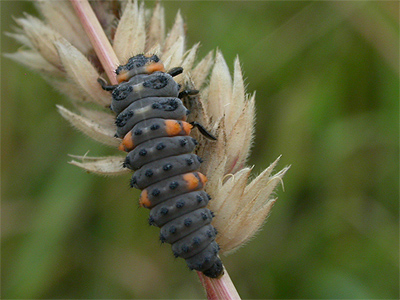 |
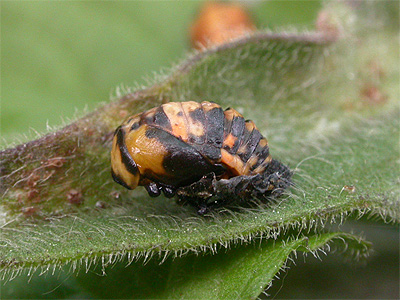 |
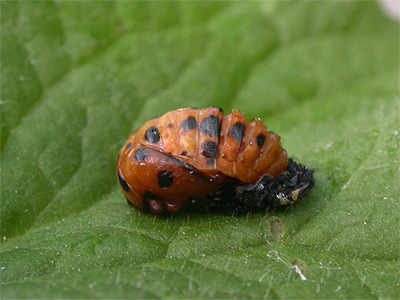 |
|
| 11-spot
Ladybird
Coccinella
undecimpunctata (Linnaeus, 1758) |
||||
| Quite a scarce ladybird across the UK, with a distinct preference for coastal habitats although can be found on heathland, but as it is a migratory species, it can occasionally turn up unexpectedly. This one was found at rest on a small Pine on Warsop Pit Top on December 28th 2006. It's size (coupled by it's oval shape) means this species is very similar to the Adonis Ladybird, both of which are shown in the above right photograph. The 11-spot Ladybird is the right of the two and is slightly larger, darker red than most Adonis, but also has a different pronotum pattern - this being almost entirely black, but having the appearance of two white "false eyes". | ||||
| .... | ||||
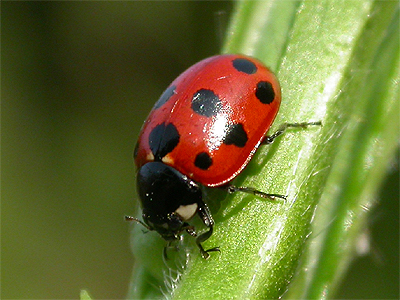 |
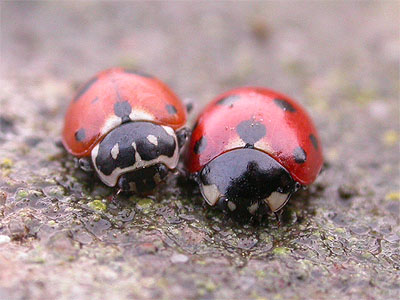 |
|||
| .... | ||||
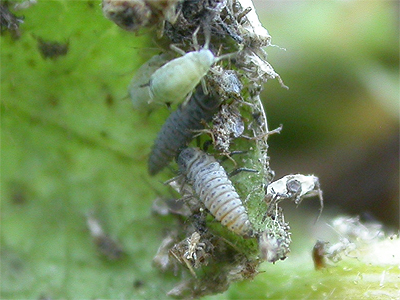 |
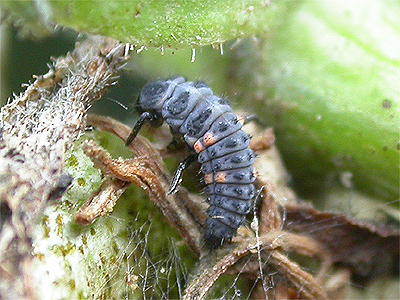 |
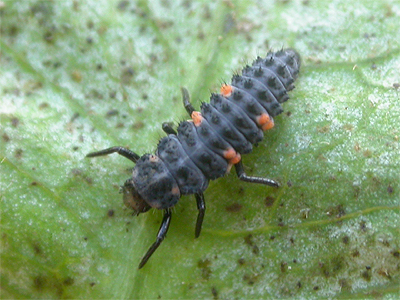 |
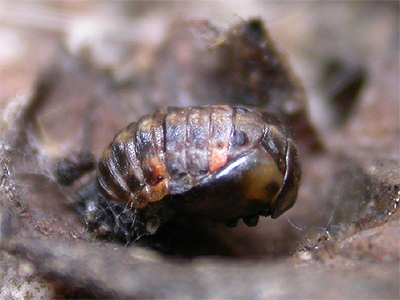 |
|
| Hieroglyphic
Ladybird Coccinella
hieroglyphica (Linnaeus, 1758) |
||||
| This is without doubt, Nottinghamshire's rarest Ladybird. The NBN Gateway lists the most recent records as Clumber Park (1981) Clipstone Heath (1987) and Budby South Forest (1989). However, the Nottinghamshire Wildlife Trust hold three records from Rainworth Heath SSSI in 2007 and 2011. On the basis of this information, we conducted specific searches for the Hieroglyphic Ladybird in conjunction with two work experience parties and the NWT, in late July 2014. We eventually found three adults of the black (commonest) form, by sweeping foliage, finding all three in a small area of wet heath. | ||||
| .... | ||||
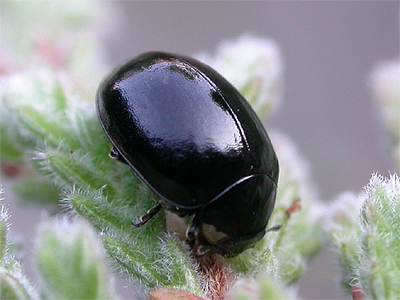 |
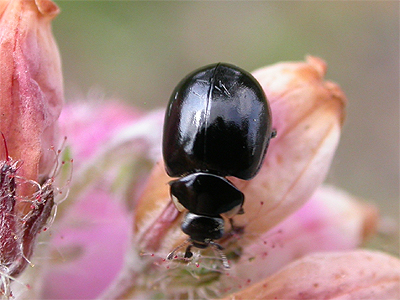 |
|||
| 2-spot
Ladybird Adalia bipunctata (Linnaeus, 1758) ..................
.. m |
||||
| Show variants | ||||
| Next to the 7-spot, this is the commonest UK Ladybird. The accompanying pictures show the typical form but spots may be extended or multiplied and the areas of black can become extended to show a black ladybird with red spots. Hibernation is usually underneath loose bark, sometimes in good numbers and in company with the Harlequin Ladybird. | ||||
| .... | ||||
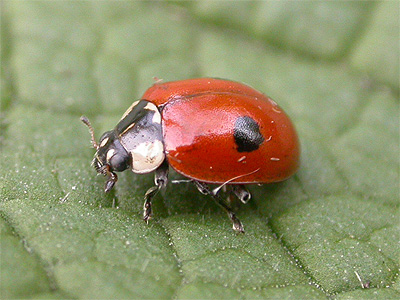 |
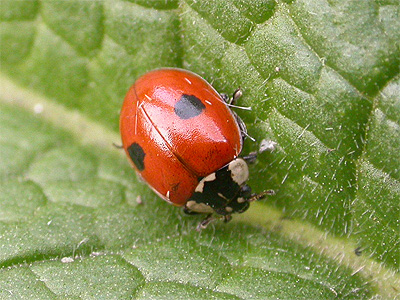 |
|||
| .... | ||||
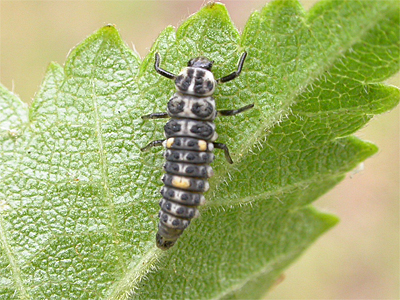 |
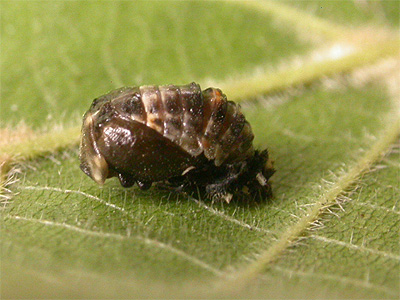 |
|||
| 10-spot
Ladybird Adalia
decempunctata (Linnaeus, 1758) |
||||
| Show variants | ||||
| The 10-spot Ladybird often shows considerable variation in the number of spots present and may have between none and up to 15 spots. The species is perhaps best recognised by it's background colouration, as this seems constant in the adults I have found. Another reliable guide to identifying them in the field, are their pale legs. It is most numerous on trees but is seems fairly regular on low-growing vegetation. The only Winter record we have came from our own garden in early 2011, when one was found under the leaf of an evergreen shrub. | ||||
| .... | ||||
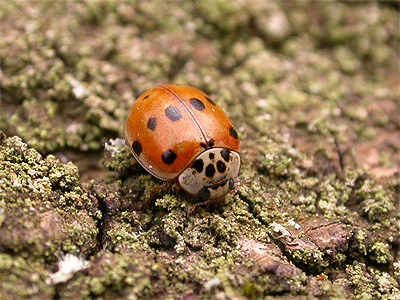 |
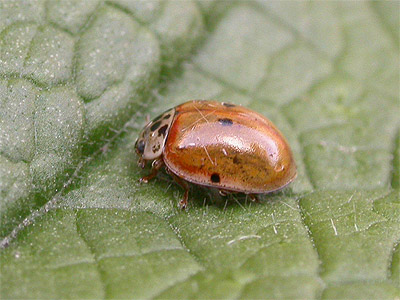 |
|||
| .... | ||||
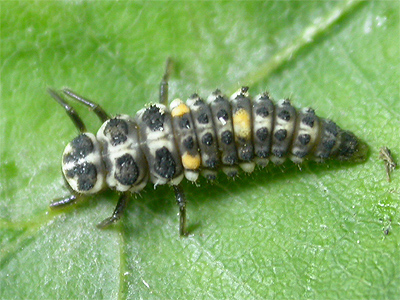 |
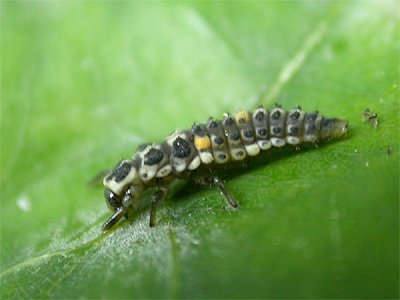 |
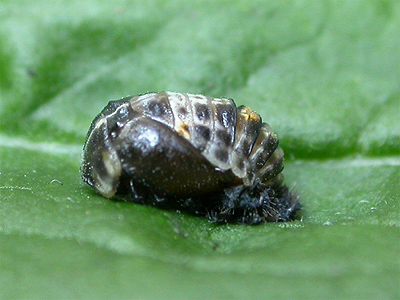 |
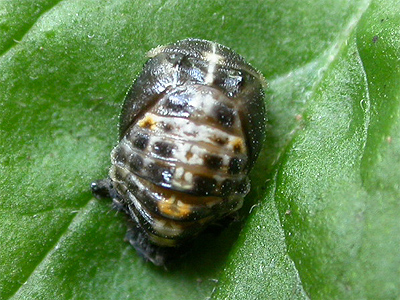 |
|
| Harlequin
Ladybird Harmonia axyridis (Pallas, 1773) |
||||
| Show variants | ||||
| This Harlequin Ladybird (Harmonia axyridis) represented the first Nottinghamshire record. After predicting it's likely appearance in the county back in 2005, we spent many hours casually searching and hoping, eventually being surprised by finding this one on Penny Pasture Common, Eakring Meadows on 29/07/06. They are a large species (see comparison with 7-spot Ladybird in photo) and markings vary considerably, with many colour forms. A second Harlequin was eventually found nearly three months later in October and then over 150 adults were found at Hare Hill Wood in early November 2006. | ||||
| .... | ||||
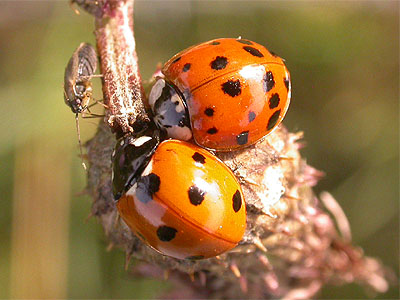 |
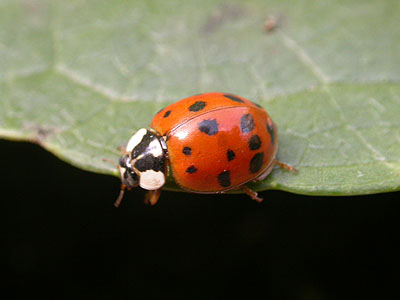 |
|||
| .... | ||||
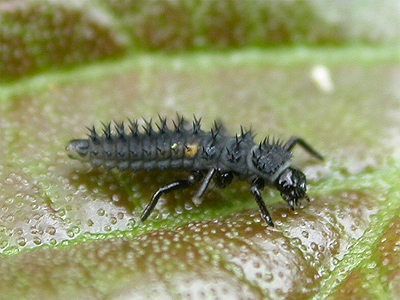 |
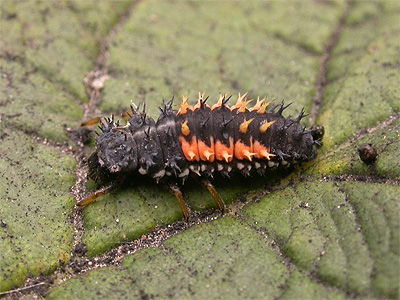 |
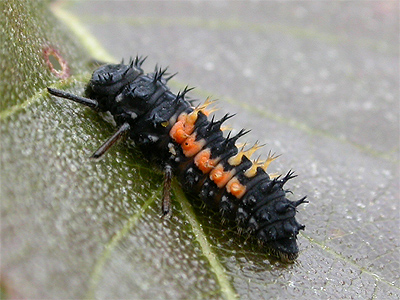 |
 |
|
| Cream-streaked
Ladybird Harmonia quadripunctata (Pontoppidan, 1763) |
||||
| Show variants | ||||
| The Cream-streaked Ladybird first arrived in Britain during the 1930's and has since spread outwards from it's original colonisation site in Suffolk, to reach both Wales and Scotland. This large tree-dwelling Ladybird frequents forested areas where Scots Pine grows. The examples shown were found in March and April 2006 at Sherwood Pines and Budby Common near Edwinstowe. Further observations during 2006 have shown that it is a relatively common species in forested areas. Occasionally found over Winter on small Pines or in bark crevices. | ||||
| .... | ||||
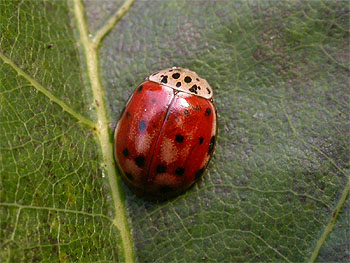 |
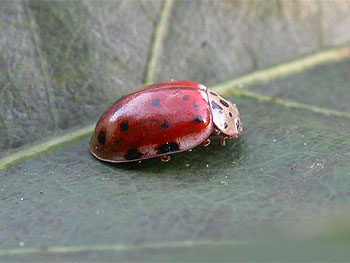 |
|||
| .... | ||||
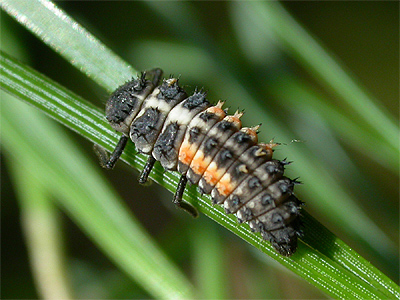 |
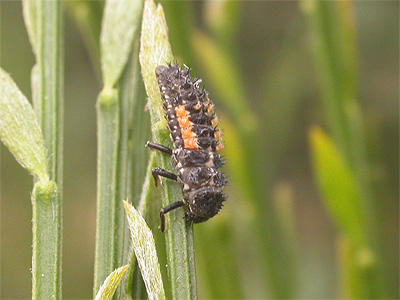 |
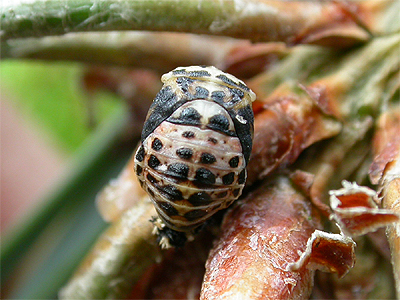 |
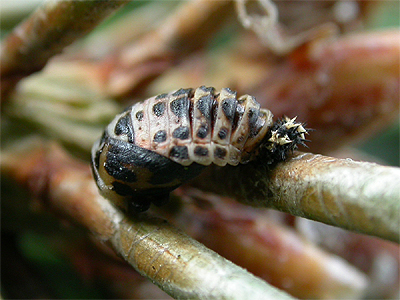 |
|
| 24-spot
Ladybird Subcoccinella
vigintiquattuorpunctata (Linnaeus, 1758) |
||||
| Although this small Ladybird is frequent in Nottinghamshire, our only records have come from a recent survey at Dartford, Kent, where they frequently turned up in numbers after sweeping long grass and Creeping Thistle. The 24-spot Ladybird is our only hairy (easily recognisable) ladybird, but a magnifying glass is really needed to show the beetle's covering of short hairs. Typically found on a range of low growing plants in grassy areas. | ||||
| .... | ||||
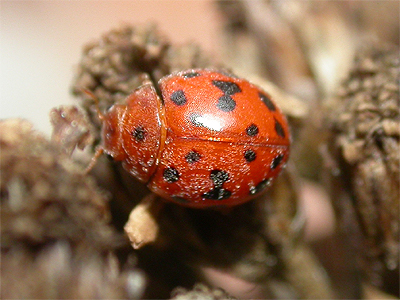 |
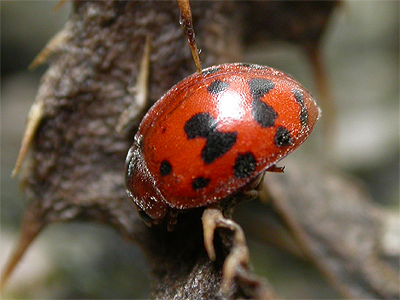 |
|||